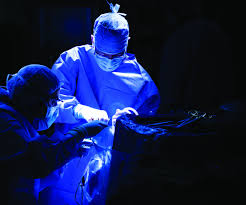
Let’s go back in history to look at five game-changing innovations in orthopedics and see how they originated. These five changed orthopedics forever. All of these crazy technology ideas have become routine practice today.
As you read these, take note of the patterns. The innovation pathway is always…
- an entrepreneurial surgeon sees a clinical need for a new technology,
- then monkeys around with prototypes,
- then collaborates with a device company to bring forth the first commercial products.
#1 Arthroscopy
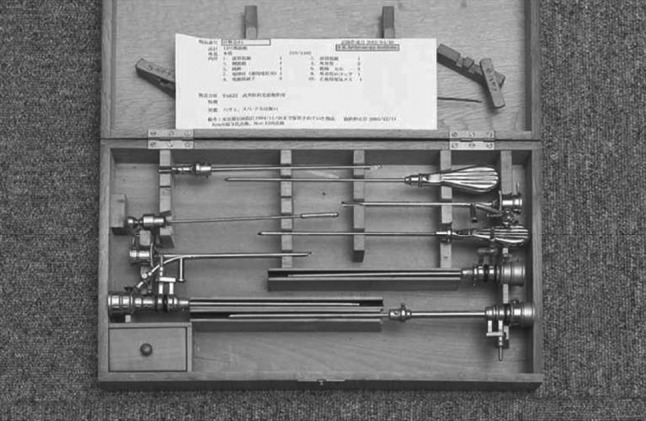
In 1962, Dr Masaki Watanabe, a Japanese teaching surgeon, performed the first arthroscopic menisectomy using the arthroscopic instruments he developed. The patient was a 17-year-old boy who twisted his knee playing basketball. Watanabe debrided the flap tear of the medial meniscus. The patient went home the same day. In 6 weeks, he was back playing basketball. A pioneer in the development of the modern arthroscope with fiberoptic illumination, Watanabe is widely considered the “father of arthroscopy.” His arthroscope was a specialized endoscope, derived from a rudimentary cystoscope. The humble orthopaedic surgeon from Japan rarely spoke of his own personal achievements, so his peers did the talking for him, championing his instruments and techniques at international orthopaedic meetings.
Dr Richard O’Connor brought arthroscopy to the western world in the 1970’s by collaborating with Dyonics Corp. In 1974, Dr O’Connor performed the first arthroscopy in the US.
#2 The Ilizarov Apparatus
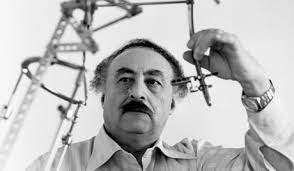
In the late 1950’s Dr Gavriil Ilizarov, a Russian surgeon inventor in Siberia, used the materials available, including bicycle parts, to create the first external fixators then stumbled onto the technique to “stretch” bones, thus inventing distraction osteogenesis. Dr Dror Paley collaborated with Richards Medical (Smith and Nephew Orthopedics) in the late 1980’s to create the first western commercial products. Dr Paley writes about how the technology came to the west here.
#3 Kyphoplasty
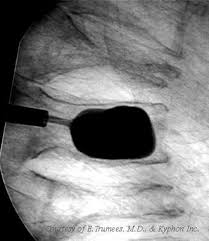
Dr Reiley was an orthopedic surgeon in Berkeley, CA in 1984 when he began working on techniques to restore shape to spines. He figured it would be possible to restore shape to a collapsed bone if he could first hollow out a space inside it before injecting bone cement. He dove into spines of cadavers with tiny jacks, scrapers, expandable rotors, lasers and ultrasound when he happened upon a stack of balloons used to clear small kidney stones. He brought them into the anatomy lab and tried them, first drilling a hole in the bone for the balloon to go in, then inflating it, deflating it and injecting cement into the cavity created. The balloons were a success, strong enough to move bone. In an October 2003 study 29 patients had their painfully hunched backs unbent by 8.8 degrees. Eventually Reiley created even hardier versions. In 1997, Dr Mark Reiley brought balloon angioplasty into spine procedures to reshape bone. Kyphon began marketing the device in 1999, after being cleared by the FDA.
#4 The Spine Cage
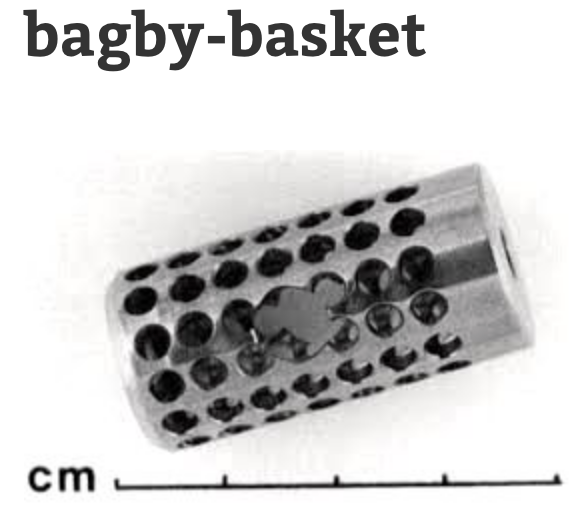
The modern intervertebral cage was invented by orthopedist (and sometimes veterinarian), George Bagby who pioneered the initial development of stainless steel cages which he used as a treatment for “wobbler’s syndrome” in horses (cervical degenerative spondylolisthesis compressing the spinal cord) which was something, up until that time, routinely required destroying the horse. The Bagby story has been a fascinating true life adventure in its own right. His first horse cage was a homemade stainless steel cylinder with multiple drill holes which was then pounded into a dill opening in the horses’ neck. Not every horse survived this pounding. Bagby then realized that the basket idea worked but a better, and safer, approach would be to add threads so that the cage could then be screwed into place, allowing a much higher level of horse survivability.
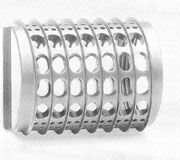
#5 Bone Growth Factors

Dr. Marshall Urist, a UCLA surgeon/researcher, discovered BMPs, but had no way of deriving a useful dose from cadavers. Genetics Institute (now Wyeth) created a synthetic version called rhBMP 2. In 2003, Sofamor Danek took a huge gamble and licensed rhBMP 2 from Genetics Institute (now Wyeth) and developed INFUSE. At one point, INFUSE sales role to $3M/day for fusion and bone repair.
In the future, look for game-changers in the areas of orthobiologics, tissue regeneration, 3D printing, robotic surgery, AI, sensors and combinations of these technologies.
What game changers do you see coming in the 2020’s?
tiger@tigerbuford.com

 The Orthopedics Industry
The Orthopedics Industry